Plot
The setting is London in about 1950. Victoria Lamartine, a young French woman working at a small family hotel in Soho, has been arrested for the murder of an English major whom she had previously known in France during the war. Lamartine had been active in the Resistance and, the prosecution now asserts, had had a child fathered by the major, who was liaising with the French maquisards. In spite of being arrested by the Gestapo, she nevertheless bears the child and survives the war. The child dies not long afterwards and Lamartine comes to London to work in the hotel. Since the end of the war, she has been trying to locate the major but in vain. Finally, just before the story opens, she succeeds in contacting him and he agrees to meet her at the hotel. That evening he is found dead in his hotel room, stabbed through the heart with a deadly technique that the Resistance had developed. Lamartine is quickly arrested and charged with his murder.
Nap Rumbold, a junior solicitor in his father's London firm, is asked by Lamartine to represent her. Nap, who speaks excellent French, had himself spent four months on dangerous missions with the French maquis in occupied France and is now a retired Lieutenant-Colonel, D.S.O. He is a friend of Major McCann, who had led tanks through France after the D-Day invasion, and asks McCann for help. McMann in turn interviews his friend Inspector Hazlerigg at Scotland Yard. Hazlerigg is not directly involved in the case, but subtly points McMann into a possible direction to take. The rest of the book is divided about equally between courtroom scenes involving Hargest Macrae and various witnesses, and the adventures (and misadventures) of Rumbold and McCann as they try to track down witnesses in both England and France who might help bring in a verdict of not guilty. Rumbold, in particular, in trying to uncover new information in France, is put in particular danger by a murderous gang and at one point saves his life only by a desperate plunge into the Loire River. The final scenes are in the courtroom and with a summing up in Hazlerigg's office.

Nikolaus Barbie was a German officer of the SS and SD who worked in Vichy France during World War II. He became known as the "Butcher of Lyon" for having personally tortured prisoners—primarily Jews and members of the French Resistance—as the head of the Gestapo in Lyon. After the war, United States intelligence services employed him for his anti-communist efforts and aided his escape to Bolivia, where he advised the dictatorial regime on how to repress opposition through torture. In 1983, the United States apologised to France for the U.S. Counterintelligence Corps helping him escape to Bolivia, aiding Barbie's escape from an outstanding arrest warrant.

Crime fiction, detective story, murder mystery, mystery novel, and police novel are terms used to describe narratives that centre on criminal acts and especially on the investigation, either by an amateur or a professional detective, of a crime, often a murder. It is usually distinguished from mainstream fiction and other genres such as historical fiction or science fiction, but the boundaries are indistinct. Crime fiction has several subgenres, including detective fiction, courtroom drama, hard-boiled fiction, and legal thrillers. Most crime drama focuses on crime investigation and does not feature the courtroom. Suspense and mystery are key elements that are nearly ubiquitous to the genre.
Michael Francis Gilbert was an English solicitor and author of crime fiction.

Isadore Blumenfeld, commonly known as Kid Cann, was a Romanian-born Jewish-American organized crime enforcer based in Minneapolis, Minnesota, for over four decades. He remains the most notorious mobster in the history of Minnesota. He was associated with several high-profile crimes in the city's history. He was tried and acquitted for the 1924 murder of cab driver Charles Goldberg. Blumenfeld was also present at the scene of the attempted murder by Verne Miller of Minneapolis Police Department officer James H. Trepanier. Blumenfeld was also tried and acquitted for personally firing the murder weapon, a Thompson submachine gun, in the globally infamous December 1935 contract killing of Twin Cities investigative journalist Walter Liggett. He was also unsuccessfully prosecuted in Federal Court for both conspiracy and racketeering in the mobbed up hostile takeover and dismantling of the Twin City Rapid Transit streetcar system during the early 1950s.

To Catch a Thief is a 1952 thriller novel by David Dodge. The scene is the French Riviera, and the time is 1951.

Calamity Town is a mystery novel by American writers Manfred B. Lee and Frederic Dannay, published in 1942 under the pseudonym of Ellery Queen. It is set in the fictional town of Wrightsville, a place that figures in several later Queen books.

La Vérité is a 1960 French drama film directed by Henri-Georges Clouzot, and starring Brigitte Bardot. The film was nominated for the Academy Award for Best Foreign Language Film.

At the Villa Rose is a 1910 detective novel by the British writer A. E. W. Mason, the first to feature his character Inspector Hanaud. The story became Mason's most successful novel of his lifetime. It was adapted by him as a stage play in 1920, and was used as the basis for four film adaptions between 1920 and 1940.

The Sergeant from Burralee is an Australian television play written by Phillip Grenville Mann. The play was also broadcast by the BBC and screened for West German television.

Smallbone Deceased is a 1950 mystery novel by the English author Michael Gilbert, published in the United Kingdom by Hodder and Stoughton and in the United States by Harper & Brothers. A practising lawyer himself, Gilbert made the setting of the novel a London solicitor's office. The book was Gilbert's fourth novel and, like his three earlier ones, features Chief Inspector Hazlerigg. The novel was well-received and has regularly appeared in "Top 100" crime lists. Some critics consider it to be Gilbert's best work.

Close Quarters is the first novel by the British mystery writer Michael Gilbert. Published in England by Hodder and Stoughton in 1947, it did not appear in the United States until 1963. By then Gilbert's reputation had been firmly established in both countries and his regular American publisher for many years had been Harper & Brothers. Close Quarters, however, was published by Walker and Company, a less prestigious house. In it we are introduced to Chief Inspector Hazlerigg, who will go on to be a recurring character in a number of Gilbert's works throughout the next ten years. Gilbert, who was appointed CBE in 1980, was a founder-member of the British Crime Writers' Association. The Mystery Writers of America named him a Grand Master in 1988 and in 1990 he was presented Bouchercon's Lifetime Achievement Award.
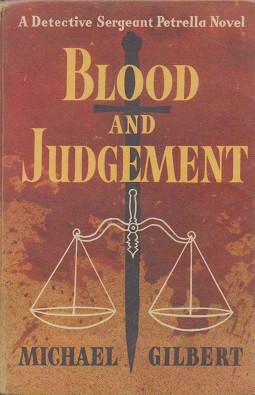
Blood and Judgement is a police procedural novel by the British author Michael Gilbert. Published in England in 1959 as Blood and Judgement by Hodder and Stoughton and in the United States as Blood and Judgment by Harper & Brothers, it was Gilbert's tenth novel. Gilbert, who was appointed CBE in 1980, was a founder-member of the British Crime Writers' Association. The Mystery Writers of America named him a Grand Master in 1988 and in 1990 he was presented Bouchercon's Lifetime Achievement Award. It introduces his most notable series character, Patrick Petrella, as a young and already somewhat controversial Detective Sergeant working out of the fictional Q Division of the Metropolitan Police Area.

Stay of Execution is a collection of mystery stories by the British thriller writer Michael Gilbert, first published in 1971 by Hodder & Stoughton. Gilbert, who was appointed CBE in 1980, was a founder-member of the British Crime Writers' Association. The Mystery Writers of America named him a Grand Master in 1988 and in 1990 he was presented Bouchercon's Lifetime Achievement Award. Unusually for a collection of stories, its reprint edition by House of Stratus in 2011 has no index detailing the stories in the book. The longest story, by far, is the last one in the book, Stay of Execution. At 54 pages, it is what is generally called a novella. Two of the stories feature Chief Superintendent Hazlerigg; three Henry Bohun; and one Detective Inspector Petrella, characters who have figured in other short stories and novels by Gilbert. The Independent said of the book in 2006:
Gilbert had a fondness for amusing but unscrupulous pirates... and an entirely practical, indeed sceptical, view of the workings of the law. It was typical of his humour that the two stories in his excellent collection Stay of Execution (1971) in which rascally solicitors "get away with it", "Back on the Shelf" and "Mr Portway's Practice", were written in the first person.
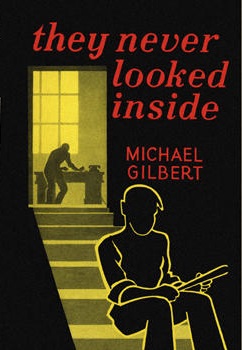
They Never Looked Inside is the second novel by the British mystery writer Michael Gilbert. It was published in England by Hodder and Stoughton in 1948 and in the United States by Harper & Brothers in 1949 as He Didn't Mind Danger. It was Gilbert's first publication in the States. It is also the second novel to feature Gilbert's earliest recurring character, Inspector Hazlerigg. Gilbert, who was appointed CBE in 1980, was a founder-member of the British Crime Writers' Association. The Mystery Writers of America named him a Grand Master in 1988 and in 1990 he was presented Bouchercon's Lifetime Achievement Award.

A Pity About the Girl and Other Stories is a collection of mystery stories by the British thriller writer Michael Gilbert, first published in 2008 by the British company Robert Hale and unpublished in the United States. It contains 14 previously uncollected stories, as well as an introduction by John Cooper and two appendices. Some of the stories feature one or another of Gilbert's many recurring characters that he created throughout his long career of writing both novels and short stories. Gilbert, who was appointed CBE in 1980, was a founder-member of the British Crime Writers' Association. The Mystery Writers of America named him a Grand Master in 1988 and in 1990 he was presented Bouchercon's Lifetime Achievement Award. The locales vary from London to Latin America and the time frame from the present back to the Victorian days of Sherlock Holmes. A number of them, such as the title story, "A Pity About the Girl", and the two concerning Colonel Cristobal Ocampas, have an unexpected grimness about them. "Michael was an exceptionally fine storyteller, but he's hard to classify," said one of his British publishers after his death. "He's not a hard-boiled writer in the classic sense, but there is a hard edge to him, a feeling within his work that not all of society is rational, that virtue is not always rewarded". This is particularly true of the last story in the collection, "By The Pricking of My Thumbs".
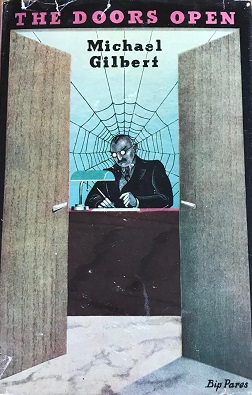
The Doors Open, published by Hodder and Stoughton in England in 1949 and by Walker and Company in the United States in 1962, is the third novel by the British mystery and thriller writer Michael Gilbert. Gilbert, who was appointed CBE in 1980, was a founder-member of the British Crime Writers' Association. The Mystery Writers of America named him a Grand Master in 1988 and in 1990 he was presented Bouchercon's Lifetime Achievement Award. Like his first two books, it features Inspector Hazlerigg, although not in a major role. It is, in fact, a very diffuse book in terms of its characters. Angus McMann, who was the chief protagonist of Gilbert's previous book, They Never Looked Inside, is briefly mentioned on the first page and makes a later appearance as a minor character. Hazlerigg does not appear until page 24 and thereafter only at intervals throughout the book. There are, in actuality, three other protagonists who, along with Hazlerigg, share the role of driving the narrative. One is Noel Anthony Pontarlier Rumbold ("Nap"), a junior solicitor in his father's London firm. Nap had spent four months on dangerous missions with the French maquis in occupied France during the war and is, apparently, still a Lieutenant-Colonel, D.S.O. A few years later he will be a main character in Gilbert's well-received novel Death Has Deep Roots. Patrick (Paddy) Yeatman-Carter, an acquaintance of Nap's, is another lead character, as is his uncle, Alfred Lord Cedarbrook, a man with an astonishing background, much sought after by both the Foreign Office and the War Office during WWII and now, apparently, still affiliated with the Secret Service. As well as being a linguist, explorer, soldier, and diplomat, he also has a law degree. All three of them, to one degree or another, carry out private investigations, sometimes with the backing of Hazlerigg, sometimes not.
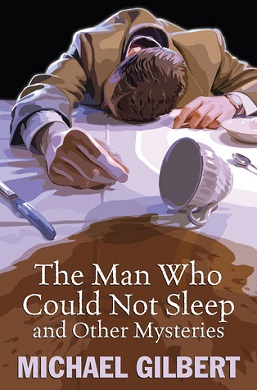
The Man Who Could Not Sleep and Other Mysteries is a collection of radio plays by the British thriller writer Michael Gilbert, first published in 2011 by the British company Robert Hale and unpublished in the United States. It contains two long, previously uncollected radio plays, as well as synopses of two proposed stage plays that were never subsequently written. It also has an introduction by John Cooper and three appendices. The locales of the plays are mostly in London and its environs. Two of the many recurring characters that Gilbert created over his exceedingly long writing career, Nap Rumbold and Hargest Macrea, are in "The Game Called Justice". As usual with Gilbert, the tone of the stories is civilized and even occasionally light-hearted, but there are always elements of bleakness beneath the urbane surface, particularly in "The Last Chapter". "Michael was an exceptionally fine storyteller, but he's hard to classify," said one of his American publishers after his death. "He's not a hard-boiled writer in the classic sense, but there is a hard edge to him, a feeling within his work that not all of society is rational, that virtue is not always rewarded.". Gilbert, who was appointed CBE in 1980, was a founder-member of the British Crime Writers' Association. The Mystery Writers of America named him a Grand Master in 1988 and in 1990 he was presented Bouchercon's Lifetime Achievement Award.

Death in Captivity is a mystery novel by the British crime writer Michael Gilbert, first published in the United Kingdom in 1952 by Hodder and Stoughton and in the United States by Harper & Brothers as The Danger Within. It was Gilbert's sixth novel and, unlike his previous ones, does not feature Chief Inspector Hazlerigg in any way. Nor is it set in Gilbert's usual locales of London, the English countryside, or France. Instead, while it has many of the elements of the classic detective story, it is also a gripping novel of mounting suspense that takes place in a 1943 prisoner of war camp for British officers in northern Italy—it was the first of Gilbert's numerous later works that would feature suspense and danger as much or more as elements of detection. Gilbert himself had been a British officer during the war, was captured, and interned in an Italian camp. He escaped and spent several months making his way through the Italian countryside trying to reach the British lines. Much of this book apparently reflects his own experiences. It was the basis of a 1959 British film, Danger Within, that closely followed the events in the book. H.R.F. Keating, who wrote Gilbert's obituary for The Guardian, said that "Gilbert's time as a PoW prompted Death In Captivity (1952), surely the only whodunnit set in a prisoner-of-war camp."

The Affair at the Semiramis Hotel is a 1917 detective novella by the British writer A. E. W. Mason featuring his character Inspector Hanaud. Mason had originally written many of the plot elements for an abortive silent film, to be called The Carnival Ball. The novella appeared between Mason's first full-length Hanaud novel, At the Villa Rose (1910), and his second, The House of the Arrow (1934).
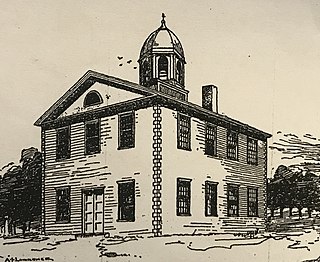
The Norfolk County Courthouse served Norfolk County, Massachusetts from soon after its establishment in 1792 until 1827. It was replaced by a new Norfolk County Courthouse. In later years, the building was known as Temperance Hall.


















